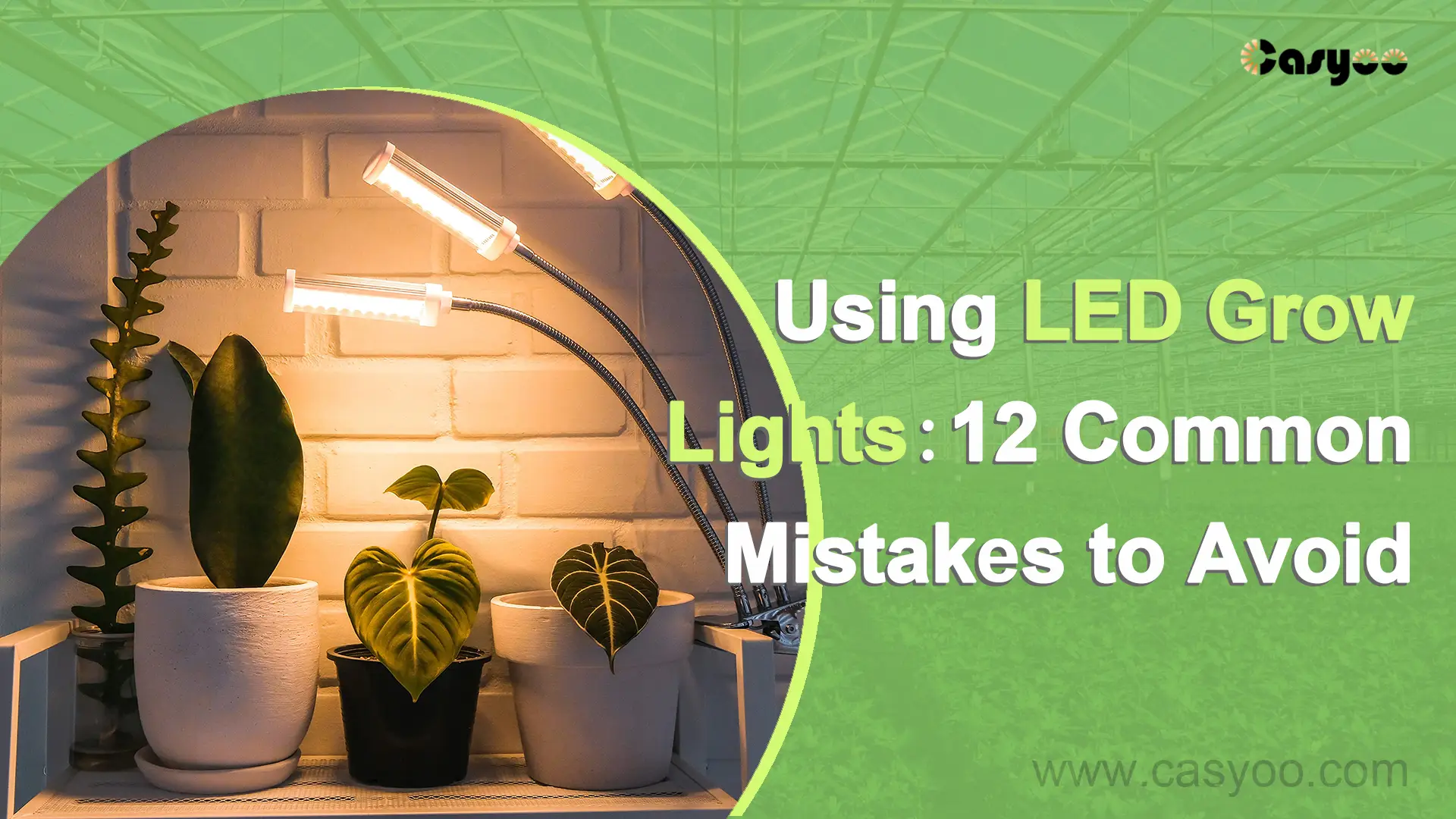LED grow lights have gained a lot of popularity in recent years due to their variable spectrum and adjustable light intensity. They are excellent instruments for increasing productivity and streamlining the growing process. But as we all know, it may be challenging to maintain your plants’ health throughout their growth cycle, and even small adjustments to the surroundings can have an impact.
Here is a list of 12 common mistakes that you should never make while using LED grow lights. Let’s get started!
Mistake 1: Using Low-Quality LED Grow Lights
Choosing cheap LED grow lights may first appear to be a cost-effective choice, but it often comes at the cost of plant health and yields.
Poor-quality grow lights may not have a balanced light spectrum to support different growth phases. While plants require a certain amount of blue light to be compact during vegetative growth, an excess of blue can result in plants that are overly robust and also reduce yields. During the vegetative stage, too much red and far red light will make your crops stretch, yet red light is necessary for ideal photosynthesis and higher yields. Cheap LED grow lights could have a spectrum that is out of balance or that differs from what was claimed.
However, if you choose high-quality LED grow lights from reliable manufacturers, you can be confident that your plants will get a balanced full spectrum of light. Better yields and quality, as well as enhanced plant growth, make the greater initial cost worthwhile.
The reliability is also important. Low-quality LEDs might have shorter lifespans, requiring more frequent replacements and money out of pocket. Imagine that your light goes out in the middle of the flowering phase and that it will take weeks for a replacement light or part to arrive, or that you are unable to contact the company from whom you got it. It can be more expensive to purchase a new grow light to replace the cheap one than to purchase a high-quality one initially.
On the other hand, high-quality LED grow lights are less prone to break and use high-quality components. Furthermore, reputable manufacturers will support you and promptly send out replacement lights or parts in the event that your light breaks, minimizing downtime.
Therefore, if you want to prevent lower yields, inferior quality, lost crops, and financial waste, get the best grow light that you can afford. For novice growers, Casyoo offers a number of reasonably priced high-quality LED grow lights.
Mistake 2: Overwatering the Plants
Some gardeners use LED grow lights like how they use HID ones. Plants under HID grow lights require more watering since they generate more heat. With LED plant lights, this isn’t the case, though.
LED grow lights produce significantly less heat than HID bulbs. As a result, the plant vaporizes up to 50% less than HIDs. To avoid overwatering your plants, you’ll need to implement new watering schedules. Otherwise, rotting roots, pests, and plant diseases will occur. It’s recommended that watering the soil when it is almost completely dry.
High-quality LED grow light will also increase the efficiency of photosynthesis in plants by transforming more carbon dioxide into glucose. Consequently, you can cut back on fertilizer expenditures by watering and even fertilizing less.
Choosing the best growing medium is essential. It helps better drainage, and water conservation, and provides the nutrients needed by the plants. A subpar medium, on the other hand, could result in nutrient loss or degradation.
Pay attention to the pH level when using water. A pH between 5.5 and 6.5 is generally ideal for plant growth.
Mistake 3: Use Normal LED Lights as LED Grow Lights
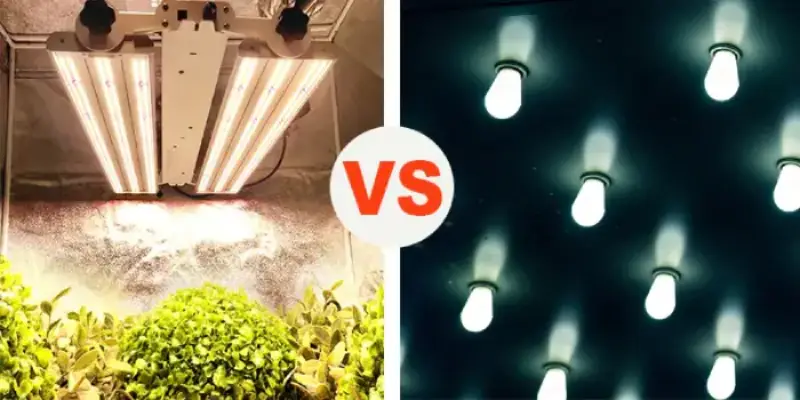
Regular LED lights aren’t designed for a grow room, even though they have some characteristics in common with LED grow lights. You can’t provide your plants with the optimal spectrum for photosynthesis or the right amount of PPFD power for strong development with normal LED lights.
Furthermore, normal LEDs will produce more heat in your grow area because they have a lower diode efficiency than grow lights. Overheating can change the humidity and temperature in your space, which could be devastating for the plants you are growing.
Mistake 4: Incorrect Hanging Height
Too High
You may need to adjust the hanging height of the LEDs if you are used to other lights, such as HIDs. Because HID lights are known to generate a lot of heat, gardeners have gotten used to hanging their lights high in order to protect their plants. But since LEDs emit a lot less heat than HIDs, you rarely have to worry about your plants being burned by them. Plants will have to extend upward to get enough light if LEDs are hung at the same height as HIDs, which will result in lanky, feeble growth.
Too Low
LED lights that are positioned too close to the plants may emit too much light. Stress causes the plants’ leaves to burn or bleach out.
LEDs should generally be hung lower during the flowering stage and higher during the vegetative period. Try to place the lights 24 to 36 inches above your canopy during the vegetative period and 12 to 24 inches above your canopy during the flowering stage. Keep an eye on any signs of plant stress.
Mistake 5: Choosing the Wrong Spectrum
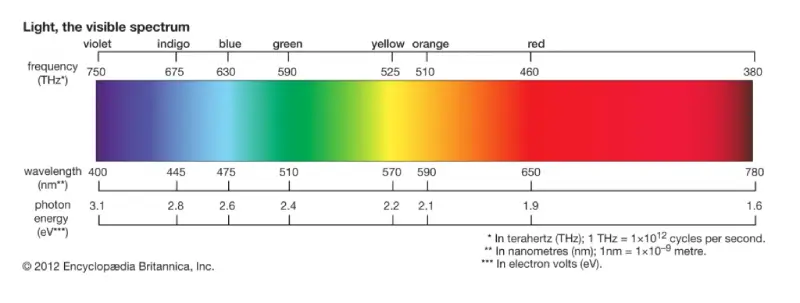
A common mistake is ignoring the light spectrum requirement. For instance, plants that thrive mostly in shadow, like spinach or lettuce, require high levels of blue wavelengths. However, plants that thrive in direct sunlight, like peppers and tomatoes, need a spectrum that is high in red light. Insufficient spectrums impede vital biological functions, impeding plant growth and decreasing total yield. Under the wrong light spectrum, plants can show stunted growth, delayed flowering, or reduced yields.
To avoid this mistake, opt for a full spectrum LED grow light, which contains all the wavelengths required for healthy growth and flowering at every stage of the plant’s life cycle.
Mistake 6: Bad Lighting Scheduling
Are you aware of the ideal light schedule that your plants require? Some gardeners make the mistake of giving their plants the incorrect light schedule. The truth is that poor scheduling for your indoor plants will make even the greatest LED grow lights ineffective.
It goes without saying that leaving the light 24/7 on will scorch the plants. Under inadequate light, your plants won’t grow quickly since they won’t receive enough sunlight for photosynthetic processes.
- Seedlings require 16 to 18 hours of light per day.
- Hydroponic plants and herbs require 12 to 14 hours of light per day.
- Foliage houseplants require 12 to 14 hours of light per day.
- Flowering houseplants require 14 to 16 hours of light per day.
When determining how many LED grow lights your plants need, take into account some factors, such as the growing space’s area, the specific plants, etc.
Mistake 7: Changing Height or Intensity too fast
“Low stress” is essential for successful indoor growing. Skilled growers never change the height or brightness of their LED grow lights without first carefully planning a strategy. Adapting to a new light intensity too rapidly can interfere with a plant’s natural physiological development. Plants often require two to three days to acclimate to a new schedule.
Mistake 8: Inadequate Cooling and Ventilation
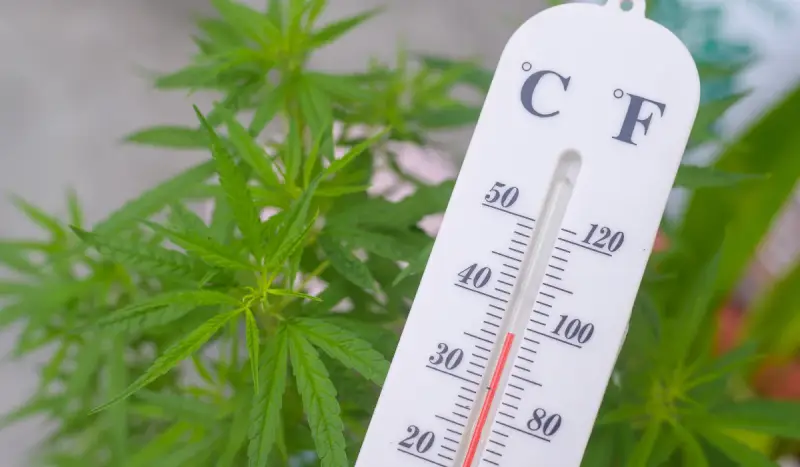
A lot of novice growers believe LED grow lights don’t produce any heat at all. This is untrue. Even while LED lights produce about 30-40% less heat than HID bulbs—you still need to control the heat since too much heat can harm your crops as well as the lights.
The heat produced by the lights builds up in the absence of adequate ventilation and/or cooling, making the environment too hot for your plants. This can cause plants to wilt, grow more slowly, or even suffer permanent harm.
Furthermore, too much heat may reduce the grow light heatsink’s cool capacity, reducing the LEDs’ effectiveness and lifespan and requiring more frequent replacements.
Therefore, investing in adequate cooling and ventilation is requisite. This will help create an ideal environment for plant growth.
Mistake 9: Using LED Grow Lights With An Unstable Voltage
Do not neglect to investigate the reliability of the voltage of your LED grow light. A strobe effect will probably be produced by lights with an unstable voltage, which could seriously impair their efficiency and long-term performance. Plants may become confused by even mild strobe lights, which would impede their growth.
Mistake 10: Not Rotating the Plants
Some gardeners fail to rotate their plants enough. Plants that get solely one direction of light have a tendency to grow in that direction, which leads to uneven growth and lower yields.
It’s crucial to rotate your plants frequently to make sure they get light from all directions and avoid this. Additionally, since fungi and pests need stagnant air to grow, this can aid in preventing fungal infections and infestations.
Mistake 11: Lack of Maintenance
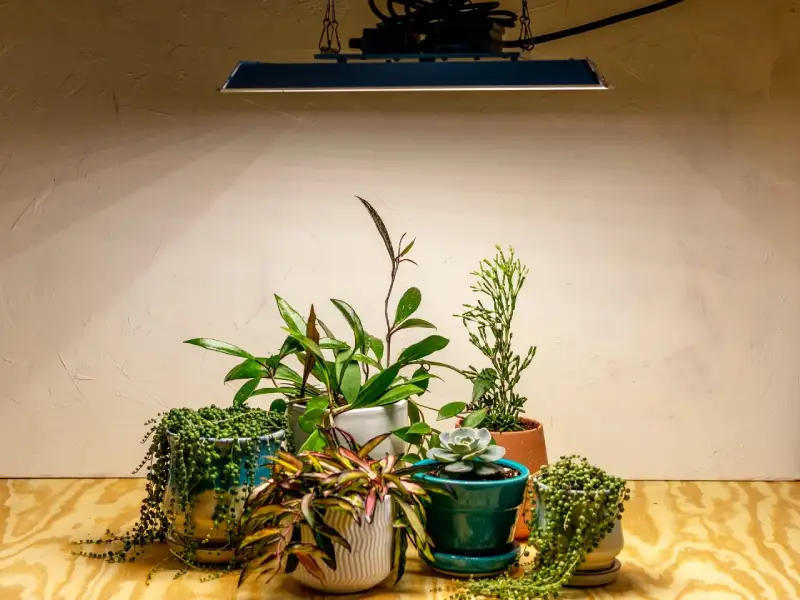
Having the greatest LED grow lights does not guarantee a happy ending. Keep in mind that regular upkeep is necessary to guarantee a healthy return on investment—that is, the money you paid for it. You can also save additional money, time, and effort.
You should utilize power stabilizers to make the lights’ voltage equal. It will extend the lifespan and improve the performance of the LED grow lights by protecting the internal chips. Additionally, make sure that the LED grow lights are solely used for plants and not for any other purpose. If not, damage will occur sooner than you may anticipate.
You should always have a sufficient supply of spare parts on hand in the case of maintenance. Check for coiled cords whenever you undertake maintenance as they might lead to underperformance or light failure.
Inspect the light, base, and socket as well. Look for any discoloration, metal bluing, or accumulation of black carbon, as these can lead to ballast problems. The accumulation of dirt must also be cleaned.
Mistake 12: Neglecting Other Growing Factors
Although light is essential for plant growth, other elements are also required. When cultivating indoor plants, there are additional important factors to consider. They are time, space to grow, temperature, air, water, and nutrients.
Make sure you offer your plants enough water. Furthermore, since most nutrients are dissolved in water, you don’t need to apply fertilizers too frequently or in excess. The three essential nutrients for plants are phosphorus, potassium, and nitrogen.
Temperature is important as well. Wintertime temperatures can prevent seeds and seedlings from sprouting or growing at all. You must thus adjust the temperature appropriately.
Conclusion
In conclusion, growing plants with LED grow lights can be a wonderful idea, but it does require some knowledge. By avoiding these typical mistakes, you can make sure that your plants grow to their full potential. Remember to choose the proper spectrum, utilize premium LED grow lights, adjust the intensity and hanging height, and be mindful of the temperature, nutrient, and watering requirements of your plants. You can use LED grow lights to successfully cultivate an indoor garden with LED grow light if you keep these tips in mind.
Want to know more about LED grow lights? You can trust Casyoo. We boast over 17 years of experience and own our own factory. We can provide the best LED grow light for you. Talk to us!

